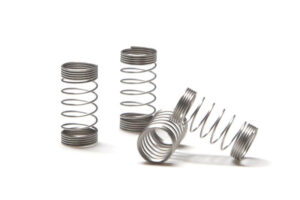How to Make Compression Springs: A Comprehensive Guide
 Compression springs are an essential component in many mechanical devices. They are widely used in automotive, aerospace, and industrial applications. These springs are designed to compress under load and return to their original shape when the load is removed. In this post, we will discuss how to make compression springs in detail.
Compression springs are an essential component in many mechanical devices. They are widely used in automotive, aerospace, and industrial applications. These springs are designed to compress under load and return to their original shape when the load is removed. In this post, we will discuss how to make compression springs in detail.
Before we dive into the process of making compression springs, let’s first understand what they are. Compression springs are helical springs that are designed to resist compression. They are made from various materials, including steel, stainless steel, and brass. The choice of material depends on the application and the environment in which the spring will be used.
Now, let’s take a look at the steps involved in making compression springs.
Step 1: Gather the Materials and Tools
To make compression springs, you will need the following materials and tools:
– Spring wire
– Spring mandrel
– Spring coiler
– Wire cutters
– Calipers
– Safety glasses
Step 2: Determine the Spring Parameters
The first step in making compression springs is to determine the spring parameters, such as the wire diameter, the outer diameter, the number of coils, and the free length. The spring parameters depend on the application and the load requirements.
Step 3: Set up the Spring Coiler
Once you have determined the spring parameters, you need to set up the spring coiler. The spring coiler is a machine that is used to form the wire into a helical shape. The coiler has a mandrel that determines the inner diameter of the spring and a guide that guides the wire as it is coiled.
Step 4: Insert the Spring Wire
Next, you need to insert the spring wire into the spring coiler. The wire is fed through the guide and wrapped around the mandrel. The coiler is then activated, and the wire is formed into a helical shape.
Step 5: Cut the Spring to Length
Once the spring is formed, you need to cut it to the desired length. Use the wire cutters to cut the spring to the correct length.
Step 6: Check the Spring Parameters
After cutting the spring to length, you need to check the spring parameters using the calipers. Measure the wire diameter, the outer diameter, the number of coils, and the free length. Make sure that the spring parameters are within the specified tolerances.
Step 7: Heat Treat the Spring
The final step in making compression springs is to heat treat the spring. Heat treatment is a process that is used to improve the strength and durability of the spring. The spring is heated to a specific temperature and then cooled slowly to room temperature.
In conclusion, making compression springs is a straightforward process that requires some basic tools and materials. By following the steps outlined in this post, you can make compression springs that meet the requirements of your application. Remember to wear safety glasses when working with wire and machinery, and always check the spring parameters to ensure that the spring will function as intended.






